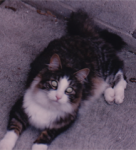Cpap cleaning and care guidelines
Cpap cleaning and care guidelines
One of the most important factors in maintaining CPAP compliance is taking proper care of your CPAP equipment. In order to have successful CPAP therapy, you must be willing to make your treatment a priority in your life, and that means regularly cleaning and maintaining your CPAP equipment. Fortunately, taking proper care of your equipment is pretty easy, and not very time consuming. With a little adjustment to your regular morning routine, your device and accessories will be working at 100% efficiency to get you that much needed sleep you've been longing for.
At The Alaska Sleep Clinic we care about how well our patients' therapy is progressing, and we strive to provide as much information as possible to make sure that they are highly informed on the impact that therapy compliance can have on their lives. One of the most frequent questions we get asked is "how often do I need to clean my CPAP equipment?" To answer this question we set out to compose a comprehensive guide on proper CPAP equipment maintenance and cleaning.
CPAP Humidifier Cleaning and Replacement
Nearly all current CPAP machines now come stock with a heated humidification system that helps cut down on morning dry mouth as well as keeping your nasal turbinates from drying out and becoming irritated and inflamed. However, the humidification chamber needs to be cleaned out daily to prevent bacteria build-up as well as calcification. Here's how:
Remove chamber from humidifier carefully so water doesn't enter your CPAP machine.
Open chamber and wash with warm, soapy water.
Rinse well with water and allow to dry on a clean cloth or paper towel out of direct sunlight.
Fill with distilled or sterile water. Do not use tap water as it may contain minerals and chemicals that can damage components of the machine. It is also not recommended to use filtered water (i.e. through a Brita filter) for the same reasons.
Once a week the humidifier chamber should be soaked in a solution of 1 part white vinegar 3 parts water for approximately 15-20 minutes before rinsing thoroughly with distilled water.
Some humidifier chambers are dishwasher safe, but make sure to check your CPAP machine's manual before cleaning in a dishwasher.
Humidifier chambers should be replaced every 6 months or as needed.
CPAP Mask Cleaning and Replacement
mirage_quatro_face_editedMost CPAP mask cushions are made of silicone, a gentle, non-irritating material. However, while silicone is a very comfortable material for masks, it doesn't have a very long lifespan, and without proper care can breakdown quicker than expected. Therefore, cleaning your CPAP mask is crucial in making it efficient as possible. Here's some tips on CPAP mask cleaning and replacement:
Wash mask daily with warm water and mild, non-fragrant soap or purchase CPAP mask specific wipes and detergents.
Rinse with water and allow to air dry on a clean cloth or paper towel out of direct sunlight.
Before using mask at night, wash your face thoroughly and don't use facial moisturizers. Facial oils and moisturizers can breakdown the silicone faster.
Once a week soak mask in solution of 1 part white vinegar 3 parts water before rinsing in distilled water.
Headgear and chinstraps should be washed as needed by hand using warm soapy water, rinsed well, and air dried. Do not place headgear or chinstraps in washing machine or dryer.
For replacement schedules of CPAP masks you should check both your manufacturer's recommendations and your insurance allowance. However, for most masks it is recommended that you replace the cushions 1-2 times per month, and the mask every 3-6 months.
CPAP tubing should be cleaned weekly in a sink of warm, soapy water, rinsed well, and left to hang-dry out of direct sunlight.
CPAP Filters Cleaning and Replacement
Your filters are located near the back of the CPAP machine where the device draws air from the room that it compresses to your pressure settings. Nearly all CPAP machines have a disposable white paper filter and some have an additional non-disposable grey filter as well. Here are some cleaning tips for your CPAP filters:
You should clean the grey non-disposable filter at least on a weekly basis. You may have to clean it more regularly if you have pets, smoke inside your house, or if your home is especially dusty.
Rinse grey filters with water and allow to dry before placing back into your machine.
The grey re-usable filters should be replaced when it begins to look worn or after 6 months.
Replace disposable white paper filters monthly or more frequently if it appears dingy or dirty.
Your CPAP machine itself does not need to be cleaned but you may want to dust it down with a slightly damp cloth as desired.
General CPAP Maintenance & CPAP Cleaning Tips
Make your CPAP equipment cleaning part of your morning routine, allowing the equipment ample time to dry during the day.
Keep machine and accessories out of direct sunlight to avoid damaging them.
Never use bleach to clean accessories.
Other machine accessories such as power cords and data cards may need to be replaced due to equipment malfunctions.
Place machine on a level surface away from objects such as curtains that may interfere with the air intake.
Always use distilled or sterile water when cleaning components.
Keep track of when you should order replacement parts for your mask and accessories so that you always get the most out of your therapy.
With these simple tips on cleaning and maintaining
At The Alaska Sleep Clinic we care about how well our patients' therapy is progressing, and we strive to provide as much information as possible to make sure that they are highly informed on the impact that therapy compliance can have on their lives. One of the most frequent questions we get asked is "how often do I need to clean my CPAP equipment?" To answer this question we set out to compose a comprehensive guide on proper CPAP equipment maintenance and cleaning.
CPAP Humidifier Cleaning and Replacement
Nearly all current CPAP machines now come stock with a heated humidification system that helps cut down on morning dry mouth as well as keeping your nasal turbinates from drying out and becoming irritated and inflamed. However, the humidification chamber needs to be cleaned out daily to prevent bacteria build-up as well as calcification. Here's how:
Remove chamber from humidifier carefully so water doesn't enter your CPAP machine.
Open chamber and wash with warm, soapy water.
Rinse well with water and allow to dry on a clean cloth or paper towel out of direct sunlight.
Fill with distilled or sterile water. Do not use tap water as it may contain minerals and chemicals that can damage components of the machine. It is also not recommended to use filtered water (i.e. through a Brita filter) for the same reasons.
Once a week the humidifier chamber should be soaked in a solution of 1 part white vinegar 3 parts water for approximately 15-20 minutes before rinsing thoroughly with distilled water.
Some humidifier chambers are dishwasher safe, but make sure to check your CPAP machine's manual before cleaning in a dishwasher.
Humidifier chambers should be replaced every 6 months or as needed.
CPAP Mask Cleaning and Replacement
mirage_quatro_face_editedMost CPAP mask cushions are made of silicone, a gentle, non-irritating material. However, while silicone is a very comfortable material for masks, it doesn't have a very long lifespan, and without proper care can breakdown quicker than expected. Therefore, cleaning your CPAP mask is crucial in making it efficient as possible. Here's some tips on CPAP mask cleaning and replacement:
Wash mask daily with warm water and mild, non-fragrant soap or purchase CPAP mask specific wipes and detergents.
Rinse with water and allow to air dry on a clean cloth or paper towel out of direct sunlight.
Before using mask at night, wash your face thoroughly and don't use facial moisturizers. Facial oils and moisturizers can breakdown the silicone faster.
Once a week soak mask in solution of 1 part white vinegar 3 parts water before rinsing in distilled water.
Headgear and chinstraps should be washed as needed by hand using warm soapy water, rinsed well, and air dried. Do not place headgear or chinstraps in washing machine or dryer.
For replacement schedules of CPAP masks you should check both your manufacturer's recommendations and your insurance allowance. However, for most masks it is recommended that you replace the cushions 1-2 times per month, and the mask every 3-6 months.
CPAP tubing should be cleaned weekly in a sink of warm, soapy water, rinsed well, and left to hang-dry out of direct sunlight.
CPAP Filters Cleaning and Replacement
Your filters are located near the back of the CPAP machine where the device draws air from the room that it compresses to your pressure settings. Nearly all CPAP machines have a disposable white paper filter and some have an additional non-disposable grey filter as well. Here are some cleaning tips for your CPAP filters:
You should clean the grey non-disposable filter at least on a weekly basis. You may have to clean it more regularly if you have pets, smoke inside your house, or if your home is especially dusty.
Rinse grey filters with water and allow to dry before placing back into your machine.
The grey re-usable filters should be replaced when it begins to look worn or after 6 months.
Replace disposable white paper filters monthly or more frequently if it appears dingy or dirty.
Your CPAP machine itself does not need to be cleaned but you may want to dust it down with a slightly damp cloth as desired.
General CPAP Maintenance & CPAP Cleaning Tips
Make your CPAP equipment cleaning part of your morning routine, allowing the equipment ample time to dry during the day.
Keep machine and accessories out of direct sunlight to avoid damaging them.
Never use bleach to clean accessories.
Other machine accessories such as power cords and data cards may need to be replaced due to equipment malfunctions.
Place machine on a level surface away from objects such as curtains that may interfere with the air intake.
Always use distilled or sterile water when cleaning components.
Keep track of when you should order replacement parts for your mask and accessories so that you always get the most out of your therapy.
With these simple tips on cleaning and maintaining
- Sheriff Buford
- Posts: 4110
- Joined: Mon Aug 09, 2010 8:01 am
- Location: Kingwood, Texas
Re: Cpap cleaning and care guidelines
You mean I can't take my cpap machine to the beach?danneves7 wrote:Keep machine and accessories out of direct sunlight to avoid damaging them.
Sheriff
_________________
| Machine: AirSense 11 Autoset |
| Mask: Mirage Quattro™ Full Face CPAP Mask with Headgear |
Re: Cpap cleaning and care guidelines
This cleaning information is from the guy who complained about mold in his tank.
_________________
| Machine: ResMed AirSense™ 10 AutoSet™ CPAP Machine with HumidAir™ Heated Humidifier |
| Mask: Fisher & Paykel Vitera Full Face Mask with Headgear (S, M, or L Cushion) |
| Additional Comments: Back up is a new AS10. |
- ChicagoGranny
- Posts: 15177
- Joined: Sun Jan 29, 2012 1:43 pm
- Location: USA
Re: Cpap cleaning and care guidelines
A lot of BS and overkill in the OP.
2x4 time?

2x4 time?
"It's not the number of breaths we take, it's the number of moments that take our breath away."
Cuando cuentes cuentos, cuenta cuántas cuentos cuentas.
Cuando cuentes cuentos, cuenta cuántas cuentos cuentas.
Re: Cpap cleaning and care guidelines
Do you seriously think we haven't been there, done that long, long ago and added to the list (and subtracted) as better ideas came up?
Re: Cpap cleaning and care guidelines
You make the above statement, then list hours and hours worth of useless overkill.danneves7 wrote:. Fortunately, taking proper care of your equipment is pretty easy, and not very time consuming.
System One RemStar Pro with C-Flex+ (460P)
Re: Cpap cleaning and care guidelines
considering your posting history, perhaps you should abstain from offering "advice".danneves7 wrote:One of the most important factors in maintaining CPAP compliance is taking proper care of your CPAP equipment.
Get OSCAR
Accounts to put on the foe list: dataq1, clownbell, gearchange, lynninnj, mper!?, DreamDiver, Geer1, almostadoctor, sleepgeek, ajack, stom, mogy, D.H., They often post misleading, timewasting stuff.
Accounts to put on the foe list: dataq1, clownbell, gearchange, lynninnj, mper!?, DreamDiver, Geer1, almostadoctor, sleepgeek, ajack, stom, mogy, D.H., They often post misleading, timewasting stuff.
Re: Cpap cleaning and care guidelines
If he just hadn't been so pompous about it!
Last edited by Julie on Sat Apr 11, 2015 10:37 am, edited 1 time in total.
Re: Cpap cleaning and care guidelines
OP,
What palerider said.
We all arrive at what we believe is "proper care" of our equipment based on "guidelines" offered by manufacturers.
Sheesh!
What palerider said.
We all arrive at what we believe is "proper care" of our equipment based on "guidelines" offered by manufacturers.
Sheesh!
_________________
| Machine: ResMed AirSense™ 10 AutoSet™ CPAP Machine with HumidAir™ Heated Humidifier |
| Mask: AirFit™ P10 Nasal Pillow CPAP Mask with Headgear |
| Additional Comments: ResMed P10 |
Re: Cpap cleaning and care guidelines
LolSheriff Buford wrote:You mean I can't take my cpap machine to the beach?danneves7 wrote:Keep machine and accessories out of direct sunlight to avoid damaging them.
Sheriff
Re: Cpap cleaning and care guidelines
Hello friends, I just wanted to clarify my intentions for this post, it was a copy paste of a website and my intention was just to show that I did some research and found a solution to my problem and this was not an attempt to give advice to anyone, but rather an attempt to help an ignorant person like myself who has been lazy or just not taking the proper steps to become educated about proper care, & I did not mean to offend any of the veterans of this forum because this post was designed to possibly help people like me and to show that I actually did some research on my own problem but those are not my words in the post simply something I copy and pasted and I did not mean to offend anyone. Have a nice day peopleLSAT wrote:This cleaning information is from the guy who complained about mold in his tank.
ChicagoGranny wrote:A lot of BS and overkill in the OP.
2x4 time?
Julie wrote:Do you seriously think we haven't been there, done that long, long ago and added to the list (and subtracted) as better ideas came up?
Too tall wrote:You make the above statement, then list hours and hours worth of useless overkill.danneves7 wrote:. Fortunately, taking proper care of your equipment is pretty easy, and not very time consuming.
palerider wrote:considering your posting history, perhaps you should abstain from offering "advice".danneves7 wrote:One of the most important factors in maintaining CPAP compliance is taking proper care of your CPAP equipment.
Julie wrote:If he just hadn't been so pompous about it!
Re: Cpap cleaning and care guidelines
that's called "plagiarism" an we shoot people for that around here... ok, not really, but it is *poor form* to paste something you think might possibly be relevant without any attribution, or quotes, or anything to set it off from any thoughts of your own.danneves7 wrote:it was a copy paste of a website
Get OSCAR
Accounts to put on the foe list: dataq1, clownbell, gearchange, lynninnj, mper!?, DreamDiver, Geer1, almostadoctor, sleepgeek, ajack, stom, mogy, D.H., They often post misleading, timewasting stuff.
Accounts to put on the foe list: dataq1, clownbell, gearchange, lynninnj, mper!?, DreamDiver, Geer1, almostadoctor, sleepgeek, ajack, stom, mogy, D.H., They often post misleading, timewasting stuff.
- Wulfman...
- Posts: 6688
- Joined: Mon Sep 01, 2014 6:41 pm
- Location: Nearest fishing spot
Re: Cpap cleaning and care guidelines
To add one more thing to the things palerider mentioned (although "attribution" may cover it), providing the link to the website you copied it from would help cover your ass with regard to "plagiarism".palerider wrote:that's called "plagiarism" an we shoot people for that around here... ok, not really, but it is *poor form* to paste something you think might possibly be relevant without any attribution, or quotes, or anything to set it off from any thoughts of your own.danneves7 wrote:it was a copy paste of a website
Damn......I'm low on bullets at the moment. Da gubberment's been buyin' 'em all.
Den
.
(5) REMstar Autos w/C-Flex & (6) REMstar Pro 2 CPAPs w/C-Flex - Pressure Setting = 14 cm.
"Passover" Humidification - ResMed Ultra Mirage FF - Encore Pro w/Card Reader & MyEncore software - Chiroflow pillow
User since 05/14/05
"Passover" Humidification - ResMed Ultra Mirage FF - Encore Pro w/Card Reader & MyEncore software - Chiroflow pillow
User since 05/14/05
Re: Cpap cleaning and care guidelines
Ef plagiarismWulfman... wrote:To add one more thing to the things palerider mentioned (although "attribution" may cover it), providing the link to the website you copied it from would help cover your ass with regard to "plagiarism".palerider wrote:that's called "plagiarism" an we shoot people for that around here... ok, not really, but it is *poor form* to paste something you think might possibly be relevant without any attribution, or quotes, or anything to set it off from any thoughts of your own.danneves7 wrote:it was a copy paste of a website
Damn......I'm low on bullets at the moment. Da gubberment's been buyin' 'em all.
Den
.
Lol, I'm not writing a book, I'm blabbing on a forum... http://www.lemonparty.org
Re: Cpap cleaning and care guidelines
Now that you can be offended by. Lol













